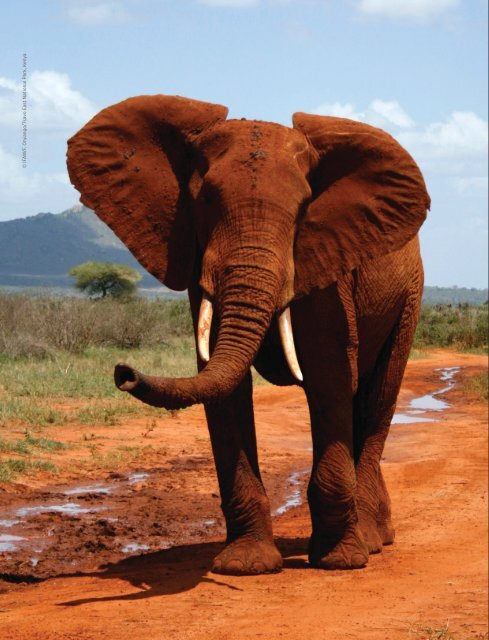ELEPHANTS & IVORY
ELEPHANTS & IVORY
ELEPHANTS & IVORY
Create successful ePaper yourself
Turn your PDF publications into a flip-book with our unique Google optimized e-Paper software.
© IFAW/F. Onyango/Tsavo East National Park, Kenya<br />
“<br />
Distinguishing one independent population from another [is] one of the most basic requirements<br />
for successful conservation and management, especially of exploited species. ”7<br />
Scientists have estimated that there are<br />
some five to more than 50 million species of<br />
organisms on the planet. 8 The wide range of<br />
uncertainty is usually explained away by the<br />
existence of untold numbers of viruses, bacteria,<br />
nematodes, insects, and other organisms that<br />
remain to be discovered, described, classified<br />
and named, especially in tropical forests and<br />
in the world’s oceans. Such uncertainty takes<br />
on new meaning, however, when we look at the<br />
elephants. Even though they are the largest<br />
surviving land mammals, conservationists have<br />
yet to agree even on how many species remain!<br />
Before we can begin to identify independent<br />
populations and implement appropriate<br />
conservation measures for each, we must be able<br />
to distinguish individual species.<br />
In 1978, when Asian elephants were first listed<br />
on Appendix I of the Convention on International<br />
Trade in Endangered Species (CITES), two species<br />
were recognized: the African elephant, Loxodonta<br />
africana, and the Asian elephant, Elephas maximus.<br />
The situation remained unchanged when African<br />
elephants were added to Appendix I in 1989.<br />
Although our scientific understanding of<br />
elephant taxonomy has advanced considerably<br />
over the past 30 years, the conservation<br />
community has failed to keep up. While state-of-<br />
the-art molecular genetics techniques reveal<br />
that there are at least three and, possibly, more<br />
species of living elephants, 9 CITES and IUCN – the<br />
World Conservation Union (the keeper of the<br />
Red List of Threatened Species), 10 among others,<br />
continue to recognize the existence of only two.<br />
Moreover, they rationalize their intransigence,<br />
claiming that “more extensive research is required<br />
to support the proposed re-classification”. 11<br />
Ignoring the opinions of the wider scientific<br />
community (such as the one cited in opening<br />
quotation above), they curiously argue that<br />
“Premature allocation into more than one species<br />
may leave hybrids in an uncertain conservation<br />
status”. The obvious answer to that argument<br />
is that failure to recognize a genetically distinct<br />
species may actually leave an entire species in an<br />
uncertain conservation status.<br />
A recent genetics study 12 confirms that the<br />
African elephants belong to at least two distinct<br />
species – the African savanna (or bush) elephant<br />
(L. africana) and the African forest elephant<br />
(L. cyclotis). The evidence now indicates that<br />
these two species are “as or more divergent” as<br />
mammoths and Asian elephants, having separated<br />
some 2.6-5.6 million years ago. Major differences<br />
between African savanna and African forest<br />
elephants, and Asian elephants are summarized in<br />
Table 1. 13<br />
25


